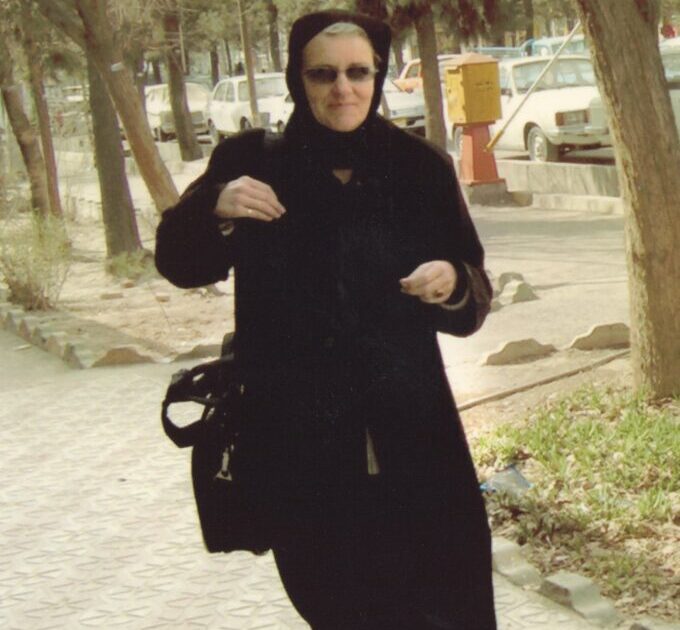Two countries were at the top of my list as a journalist reporting on the Middle East: Iran and Iraq. That’s where the action was, at least most of the time. Yet both were not easy to visit.
Iraq I visited for the first time in 2003. By then, I had already been a in Iran couple of times. I had written a book about an Iranian resistance group, before I ever got myself hooked to Iraq. In 2005, my book Misled Martyrs was published in the Netherlands, for which I had been allowed to do research in Iran and talk to former members of the group I was portraying in the book (it has since been translated into Farsi, Kurdish and Arabic).
Like I did at the beginning in Iraq (before I settled there in 2008), I conducted in Iran too a number of 10 day workshops for journalists on basic skills. Our Iranian students were very eager to learn, but we all were quite aware of the limits that existed to reporting in Iran. We also knew that everything we did was being reported to the secret service. Yet those workshops were very rewarding, as we really saw significant progress in our students.
It didn’t last, though. A new tougher president meant we could no longer organize those workshops. But for a short while, I could still visit to do my work as a journalist.
Couple
I was lucky that I had met a nice couple in Tehran, that opened up their home to me. After my first trip where I stayed in a hotel and worked with a fixer, next trips I stayed with those friends and found my way around with their help. It is so useful to stay with people and get a better idea of daily life; it deepens your understanding of a country. Especially in Iran, where nothing is what is seems, and once inside, life is completely different from what you’d expect in an Islamic republic.
Was it difficult to work in Iran? Well, you had to listen even better to what people were omitting. And you had to be more aware of the danger just talking to you could pose for them.
Iran and Iraq have been enemies for centuries. The Iraqis were happy at the time Alexander the Great came to concur them, because he beat their enemy, the Persian King Darius. It’s about religion; the two main Islamic sects, Sunni and Shiite, are strongly competitive. But also about land, borders and power. After Ayatollah Khomeini changed Iran into an Islamic Republic, Saddam Hussein fought an eight year war against him, without either of them being able to win.
This animosity between the two peoples I even encountered on a personal level, between Iranians and Iraqis in the diaspora. And later, between some people in Iraq towards Iranians. It reminded me of how my parents had never been able to get over the hurt inflicted by the Germans during the occupation in the Second World War. And it inspired me to write A Devil’s Child (coming soon!).
The way people treat each other in general has this kind and polite undertone.
At the same time, these two countries and their people also have much in common. I remember being taught about taroof, the Iranian rule of politeness, demanding of anyone always to refuse any offer a couple of times, and the person who is offering to keep repeating the offer. I found exactly the same in Iraq. And that’s somehow symbolic for why I like to be there: the way people treat each other in general has this kind and polite undertone.
Which seems so strange when you realize how much violence there is in both countries! Perhaps it is this contradiction that has attracted me to them. I remember walking through Bam, just after an earthquake had flattened most of this ancient Iranian town, and being offered hospitality by the victims. Just like I have been impressed time and time again by the hospitality in Iraq, and mostly from the poorest people.
Scarf
Of course I cannot write about Iran without mentioning the dress code. Nobody enjoys having to don a scarf and manteau when venturing outside – although the coat I wear in the picture above was only needed for religious cities like Qom. But that’s the only way you can blend in and keep away from being harassed and even arrested by the morality police. I loved to see how Iranian women became experts in moving the boundaries, with manteaus getting shorter and tighter, the jeans underneath getting skinny and their hair uncovered by much of the scarf. And of course I support their fight to be able to decide for themselves what to wear.
I remember one time mentioning to one of the women who visited my friends in Tehran, that perhaps if all the women were to all take off their scarves, the rulers would then have no choice but to allow them to drop the garment all together. She did not think it was possible at the time. But it seems that now, women are indeed trying that trick. And are getting the support of many of the men in doing so. I really hope it will work.
The picture above is made by Dutch prize winning photographer Eddy van Wessel, whom I worked with often in both Iraq and Iran.
